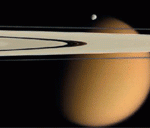 The brain reigns as the most important sex organ–even for microscopic worms. By “masculinizing” the tiny brains of genetically female nematodes, researchers have given these ladies sexual behavior typical of male worms and begun to unravel the neuronal circuits behind worm attraction.
The brain reigns as the most important sex organ–even for microscopic worms. By “masculinizing” the tiny brains of genetically female nematodes, researchers have given these ladies sexual behavior typical of male worms and begun to unravel the neuronal circuits behind worm attraction.
Sex isn’t to Caenorhabditis elegans–a 1-millimeter worm that feeds on soil bacteria–what it is to humans. The vast majority of individuals are genetically female, but they are really hermaphrodites, producing enough sperm to self-fertilize as many as 300 eggs. When food is abundant, females can release pheromones to attract the rare males, whose more robust sperm can fertilize as many as 1200 eggs. Whereas males actively seek out the pheromones, hermaphrodites don’t.
To understand what makes the two sexes behave differently, Jamie White of the University of Utah, Salt Lake City, and his colleagues looked to the worms’ brains, which number fewer than 400 neurons and are very different in males and hermaphrodites. In one experiment, White’s group enlisted the help of a gene called fem-3, which, when it is overexpressed throughout the developing hermaphrodites’ bodies, makes them males. The researchers overexpressed it in just the nervous systems, producing worms that had the bodies of hermaphrodites–they lacked the tail males use to copulate–but with intact male nervous systems.
The researchers filmed these mixed-up worms on a petri dish dabbed with the female pheromone. The modified worms moved toward the pheromone; in fact, their behavior was indistinguishable from a male’s. Apparently, a masculinized brain is all it takes for the worms to develop male-typical behavior, says White. That finding matches studies on mice and fruit flies that show that, depending on which genetic cues are activated in the nervous system, “core anatomy is capable of generating either male or female behavior,” says neuroscientist Cori Bargmann of Rockefeller University in New York City.
The researchers also discovered that three small groups of cells in males’ nervous systems–called AWA, AWC, and CEM–play a key role in the sexual attraction of males to females. When both the AWA and AWC groups, or just the CEM group, were zapped with a tiny laser beam, males lost interest in pheromones, the videotape revealed. When the same was done to the cell groups of immature males, however, the worms still displayed sexual attraction when they became adults. Apparently, the remaining neural groups take over the job of the lost cells. That makes sense, White says: “Sexual behavior needs to be very robust.” This way, if something goes wrong in one type of neuron during development, “the male can still reproduce.”
First published by ScienceNOW: [htmll] [pdf].
 Our solar system may have plenty of cosmic cousins. Scientists studying archived data have spotted an adolescent sunlike star with a dusty belt that shows evidence of the creation and violent destruction of baby planets. “There is no doubt that they are detecting the dusty debris of rocky [Earth-like] planet formation,” says Scott Kenyon of the Harvard-Smithsonian Center for Astrophysics. A report of the find, by a team headed by Joseph Rhee of the University of California, Los Angeles, is in press at The Astrophysical Journal.
Our solar system may have plenty of cosmic cousins. Scientists studying archived data have spotted an adolescent sunlike star with a dusty belt that shows evidence of the creation and violent destruction of baby planets. “There is no doubt that they are detecting the dusty debris of rocky [Earth-like] planet formation,” says Scott Kenyon of the Harvard-Smithsonian Center for Astrophysics. A report of the find, by a team headed by Joseph Rhee of the University of California, Los Angeles, is in press at The Astrophysical Journal.

